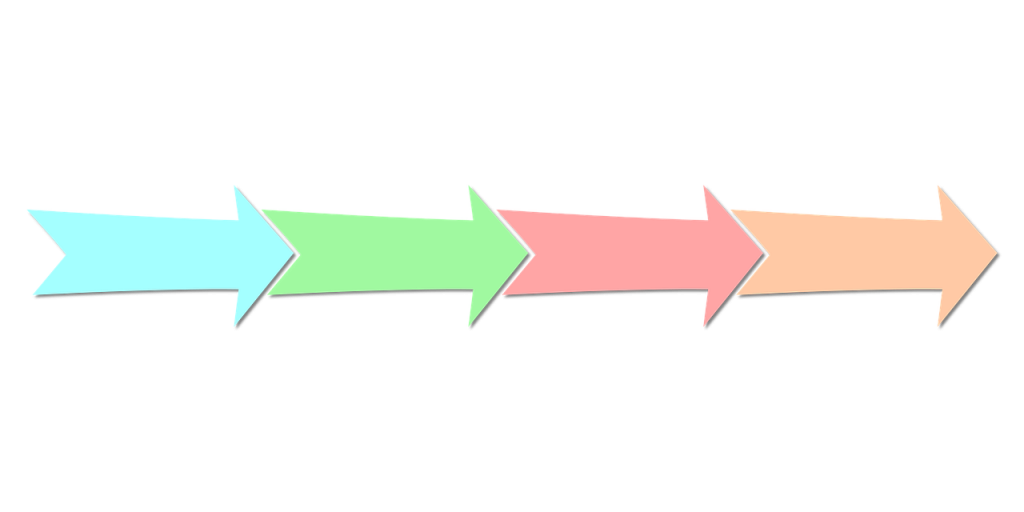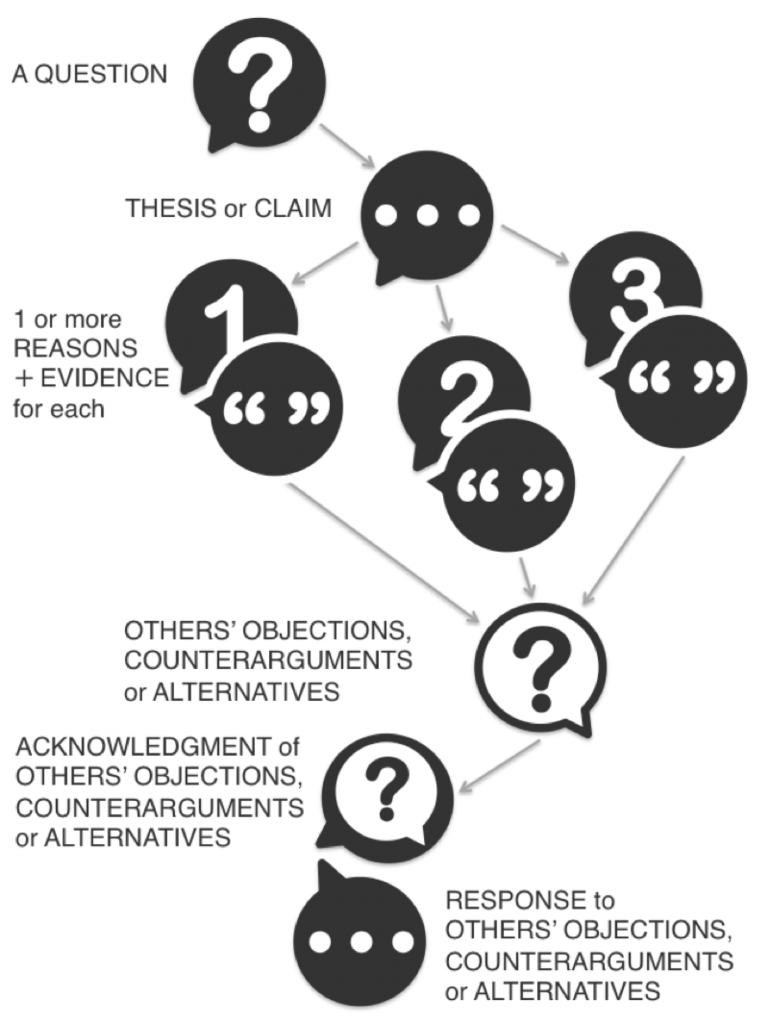Chapter 8: Making a Research Argument
Order of the Components
 One common arrangement for argumentative research papers is to begin with an introduction that summarizes the research conversation—what other scholars have been contributing to the state of knowledge around your topic—and explains why the situation is important—why the reader should care about it. Your research question will probably not appear, but your answer to it (your thesis, or main claim) usually appears as the last sentence or two of the introduction.
One common arrangement for argumentative research papers is to begin with an introduction that summarizes the research conversation—what other scholars have been contributing to the state of knowledge around your topic—and explains why the situation is important—why the reader should care about it. Your research question will probably not appear, but your answer to it (your thesis, or main claim) usually appears as the last sentence or two of the introduction.
The body of your paper, or discussion section, follows and may consist of:
- Your reasons the thesis is correct or at least reasonable.
- The evidence that supports each reason, often occurring right after the reason the evidence supports.
- An acknowledgement that some people have/could have objections, reservations, counterarguments, or alternative solutions to your argument and a statement of each. (Posters often don’t have room for this component.)
- A response to each acknowledgement that explains why that criticism is incorrect or not very important. Sometimes you might have to concede a point you think is unimportant, if you can’t really refute it. (Again, posters often don’t have much room for this part of an argument.)
After the body (discussion), the paper ends with a conclusion, which states how you contributed to the larger research conversation, directions for future research and any lingering questions you may still have. The conclusion should also mention why your research matters. What’s at stake?
A Blueprint for Argument
It’s no accident that we say people make arguments—they’re all constructed, and these components are the building blocks. The components are important because of what they contribute. The components generally, though not always, appear in a certain order because they build on or respond to one another.

For example, the thesis or claim is derived from the initial question. The reasons are bolstered by evidence to support the claim. Objections are raised, acknowledged and subsequently responded to.
A research question leads to a thesis or claim, backed up by one or more reasons and evidence to support them. Others’ objections or alternative ideas are raised and responded to.
The components of argument build on each other.
Try it: Drag the elements of an argument into the order in which they usually occur in an oral argument (and may appear in a written argument). If you need help, look back at one of the text above.
Adaptations
This section has been adapted from Components of an Argument and Order of the Components in Choosing & Using Sources: A Guide to Academic Research by Teaching & Learning, Ohio State University Libraries, licensed under a Creative Commons Attribution 4.0 International License, except where otherwise noted.
Media Attributions
- arrows © padrefilar is licensed under a CC BY (Attribution) license
- aa-blueprint © Teaching & Learning, University Libraries is licensed under a CC BY (Attribution) license
An author reiterates the main ideas, arguments, and details of a text in their own words, condensing a longer text into a smaller version. Contrast with paraphrase.
A statement that makes a claim or presents a theory. A thesis is the “focal point” of many academic works, which tend to hinge on either proving or challenging the main claim made in the thesis.

